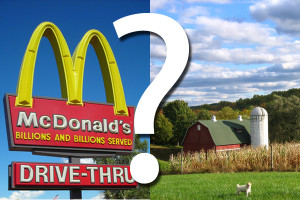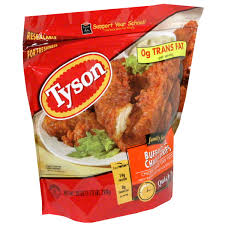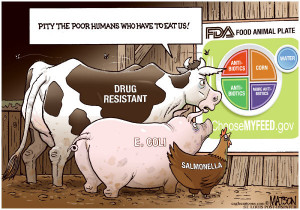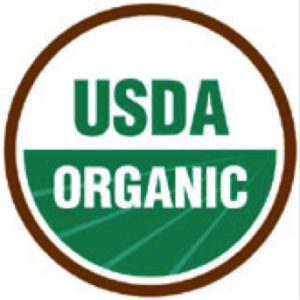Matt Nolan
Critical research
The American Food System
By: Matthew Nolan
Do you ever wonder where that cheeseburger that you picked up at McDonalds for lunch came from or what it is made out? Some do, some don’t but almost everyone is un informed on what they are putting into their bodies on a daily basis.
a daily basis.
There are many different views when it comes to the American food system and how it is run. Many of these views are shown in the articles Food Inc., You Are What They Eat, Organic Illusions, and Resisting Food Safety. Theses articles all bring up things that go unseen to the general public that are the ones who are consuming the food and should know what they are putting into their mouths.
You may ask well, what is in jeopardy with the way that the American food system is being run today? The answer, there are many different things. But, the biggest one is the health of the American consumers. Most of the food being consumed on a daily basis in America is not good for the human body due to the practices of the food system.
The food industry is corrupted by big companies that are thirsty for money, forcing farmers to use GMO’s and specific feeds/farming techniques. A great majority of these things are bad for animals, humans, and the environment. The government(FDA,USDA) needs to do a better jo b at regulating and enforcing their rules on these techniques/practices used by companies and farmers. This leads to many unmoral things and sickness that could all be avoided if things were run correctly and morally. But is there a way to fix all of this and have a healthier food system for all of America or will we keep going down the same path?
b at regulating and enforcing their rules on these techniques/practices used by companies and farmers. This leads to many unmoral things and sickness that could all be avoided if things were run correctly and morally. But is there a way to fix all of this and have a healthier food system for all of America or will we keep going down the same path?
Large companies have taken over the American food system single handedly in their desire to make the most money possible. How did they do this?

They have power and control over farmers by paying them good money to do what they want them to and to say nothing about it. If the farmer wanted to leave and be out on his own he would most likely go out of business due to all of the surrounding farmers working for the company that they once did. We see this in the video “Food Inc.” where the farmers talk about how they are controlled like puppets and doing things that they don’t believe in themselves. Companies also make seed deals that the farmers have to use and if you store the seeds or try and sell them you will have a lawsuit coming your way. The feed that they force their farmers to feed to their animals is mostly GMO’s and other parts of chopped up animals. On top of all of this, most of the government and people above the big companies have money invested in the companies. This makes it almost impossible to change how things are happening now with the massive amounts of corruption.
The corruption, GMO’s, pesticides, etc. are bad for America, consumers, animals, and even the environment. How? There are many studies that have been performed to prove this.
Much of what is in the animals feed is very disgusting. That means that consumers are eating those animals that grew up eating that feed. “Our investigation raises concerns that the federal government isn’t doing enough to protect the feed supply and that as a result the food we eat may not be as safe as it could be”(CR Pg.26). The feed makes the animals unhealthy and many things are being thrown in that should not be like leftover pieces from other butchered animals, waste, and GMO’s.
GMO’s are in a ton of the foods that are being sold to consumers. As it says in the article GMO pig feed “Currently, no GE safety testing is required in the U.S. The long-term study revealed that pigs fed a GE diet suffered higher rates of severe stomach inflammation…”. This causes many problems that go unseen, for example gluten, many people in America do not know that they are gluten sensitive and it causes many different problems throughout the body. Pesticides and animal waste is being spread into fields and other places in the environment that leads to the polluting of water that all life drinks from on a daily bases. Workers are being mistreated in many of the facilities across America. They get paid dirt for doing dangerous and disgusting jobs. These are just some of the many things that are going on behind the scenes that is ignored by the food industry.
The government, USDA, and FDA are not doing their jobs to overlook the food industry and protect animals and humans. For example Nestle says that they have a lack of funding and manpower to do the job and keep up wi th the growing food system. The lack of manpower leads to a lack of inspections and oversight of practices that in turn are twisted and there is more room for error which leads to food borne illness and other things.
th the growing food system. The lack of manpower leads to a lack of inspections and oversight of practices that in turn are twisted and there is more room for error which leads to food borne illness and other things.
According to consumer reports, about 80% of seafood in the United States is imported and the FDA tests only about 2%. That is a ridiculously low percentage to be testing on all imports that could contain toxins and bacteria that could harm consumers. The FDA and USDA need to find a way to get more funding and employees to keep up with the changes in the food system for the good of the consumers. It is ridiculous that the consumers think that the job is being done in the right way and that they have nothing to worry about when it is being done poorly. The government, the FDA and USDA need to do a better job, its as simple as that.
There are ways to fix this mess that is going on with the food system in America. But no one can seem to agree and points fingers at everyone els for the problems. As Nestle says, the government(FDA,USDA) blames the corporations/companies, which blame the consumers and vice versa. Once we get over that we can start breaking down how to solve this problem.
As seen in the video “Food Inc.” one farmer did everything the natural way. For example the cows were in a field, ate the grass, and went to the bathroom and the cycle continued. “If the animals were on a grass diet would eliminate 75% of E coli in gut”(Food Inc.). If this was done throughout the US there would be less talk about feed and what environment that the animals lived in. Taking away the big companies that control everything would be another good idea.
 If food was bought locally that decreases the chances for bacteria and other things to grow with the less time that it is processed, shipped, and stored. Though some would disagree with this hypothesis like Blake Hurst. Hurst while talking about a study done at Stanford disagrees with the more natural way. “When a study finds no differences in nutritional value after 70 years of hybrid seeds, 60 years of chemical fertilizers, a half century of synthetic pesticide application, and almost two decades of GM seed, its a problem for the narrative of the organic industry”. This is definitely worth looking into but there would need to be more studies done since so many people would be for a more organic old fashioned way of farming. What happened to the old way of farming where there were minimal problems when it came to practices, GMO’s, pesticides, feed, etc. Will there be a day when we revert back to the ways that were less harming?
If food was bought locally that decreases the chances for bacteria and other things to grow with the less time that it is processed, shipped, and stored. Though some would disagree with this hypothesis like Blake Hurst. Hurst while talking about a study done at Stanford disagrees with the more natural way. “When a study finds no differences in nutritional value after 70 years of hybrid seeds, 60 years of chemical fertilizers, a half century of synthetic pesticide application, and almost two decades of GM seed, its a problem for the narrative of the organic industry”. This is definitely worth looking into but there would need to be more studies done since so many people would be for a more organic old fashioned way of farming. What happened to the old way of farming where there were minimal problems when it came to practices, GMO’s, pesticides, feed, etc. Will there be a day when we revert back to the ways that were less harming?
As you can see the American food system has many underlying problems that is blind to the consumers. American people are uninformed with what goes on behind the scenes and what they are putting into their bodies day after day. Starting with company corruption, GMO’s, poor practices, lack of government funding/manpower are all big problems that have to be looking into. There are many different ideas and ways that it can be changed for the good. But the American people need to step up and make it known that there is a problem that needs to be fixed. The people in charge will not do anything about it if they are making their money. Also having everyone involved with the food system blaming each other for the poor job is definitely not fixing the problem. So it comes back to this question do you believe that the American food system change for the good? Or will it always be in the poor non ethical state that it is now.
Reflection Questions
Unit I / 10%
Using the homework, in-class workshops, revision workshops, etc.
1.) Describe your understanding of the “writer’s project”? How were you able to identify the texts’ “project”? Discuss your own “project” as it pertains to this particular blog article.
I believe that the writers project brings attention to what is really going on with a song, writing piece, etc. I always listen to songs and try to figure out what they are singing about, I find that interesting. I look up lyrics and there is a site genius lyrics that kind of interprets the lyrics for you on what they are really trying to say. I think that my project works like this in a way that using the articles brings out what I am really trying to say in a way.
2.) Describe your completion of the “Sorting it Out” workshop? What sections were most beneficial to the development of your ideas—and why? Discuss how this workshop assisted in development of draft and/or assignment organization?
It helped me know what each articles were talking about with the different words that each of them used. That helped me section different articles together. It also helped by talking about what argument each article was putting forth and so I could also use that to organize them with my own argument.
3.) Describe your understanding of synthesis. What is its importance? How did it manifest within your drafts and/or final blog article? Provide examples.
At first I had a wide range on what I was writing about. Then after doing some of the exercises that we did in class with the synthesis I got more specific. For example “Consumers do not know what they are eating today” to “When you go to lunch at Burger kind do you know where that burger is coming from and what is in it?” opening sentences early and later. It helped me change to catch the readers attention and be a little more interesting.
4.) Describe your own accomplishment (of something) during this unit.
Learning how to organize ideas better and how to write a blog compared to a usual essay.
5.) Discuss the evolution of the main idea. Where did you begin (include the example) and show its progress (again, include example) throughout the drafting/revision process. To what do you attribute its evolution?
At the beginning I had a broad idea as there were so many things that I was interested in to write about. But as we went along and did different activities I narrowed down my ideas! All of the exercises that we did really helped me to narrow down my idea and be more specific.
6.) Discuss what organizational strategies you implemented in order to structure this blog article. Provide examples from a section(s) of an earlier draft and other excerpts in later drafts to support your response.
I liked the activities that we did in class. For example sorting it out. I tried to break down my blog into different parts on what is wrong with the food industry.
7.) Provide an example of the final draft where you successfully synthesize 3 texts in a concise and direct manner. Discuss how this evolved throughout the drafting process for you.
“There are ways to fix this mess that is going on with the food system in the United States. But no one can seem to agree and blames everyone els for the problems. As Nestle says, the government(FDA,USDA) blames the corporations/companies, which blame the consumers and vice versa. Once we get over that we can start breaking down how to solve this problem.
As seen in the video “Food Inc.” one farmer did everything the natural way. For example the cows were in a field, ate the grass, and went to the bathroom and the cycle continued. “If the animals were on a grass diet would eliminate 75% of E coli in gut”(Food Inc.). If this was done throughout the US there would be less talk about feed and what environment that the animals lived in. Taking away the big companies that control everything would be another good idea.
If food was bought locally that decreases the chances for bacteria and other things to grow with the less time that it is processed, shipped, and stored. Though some would disagree with this hypothesis like Blake Hurst. Hurst talking about a study done at Stanford disagrees “When a study finds no differences in nutritional value after 70 years of hybrid seeds, 60 years of chemical fertilizers, a half century of synthetic pesticide application, and almost two decades of GM seed, its a problem for the narrative of the organic industry”. This is definitely worth looking into but there would need to be more studies done since so many people would be for a more organic old fashioned way of farming. What happened to the old way of farming where there were minimal problems when it came to practices, GMO’s, pesticides, feed, etc. Will there be a day when we revert back to the ways that were less harming?
8.) Discuss the evolution of the ‘lede’ in earlier drafts and its final version (provide examples of each): where did you begin, what feedback did you receive, and how did it end up in final blog article?
In the beginning I had a normal introduction. After we did the exercise on the lede I changed it to be more interesting and catch the readers attention. “Do you ever wonder where that cheeseburger that you picked up at McDonalds for lunch came from or what it is made out? Many people are un informed on what they are putting into their bodies on a daily basis.””
9.) Name a specific writing/researching/revision goal you’d like to work on during the next Unit projects.
I would like to work on making my blog smoother and easier to read. I want to learn how to break it down. For example if you see a blog you see a sentence or two then a space then a sentence or 4 space ect. ect. I want to really learn how to do that better.